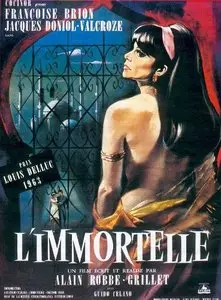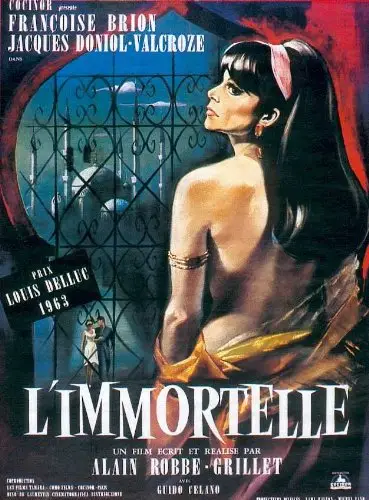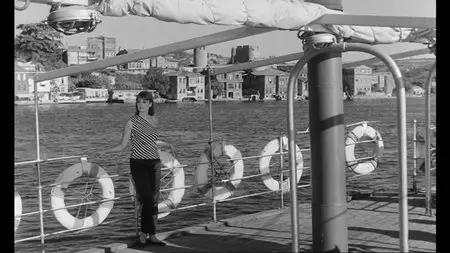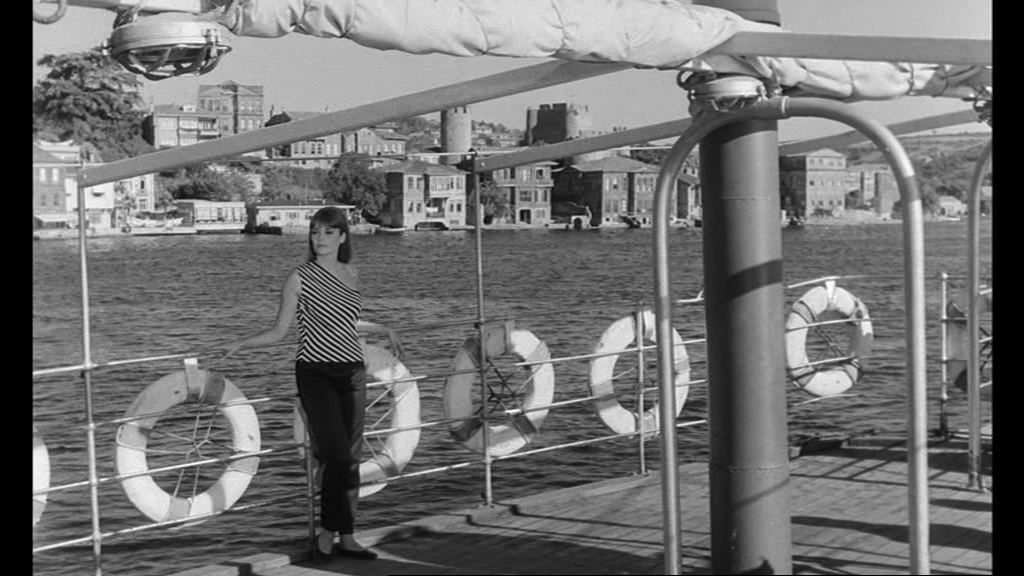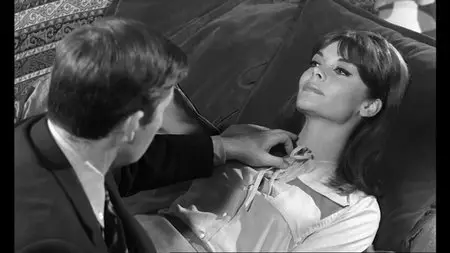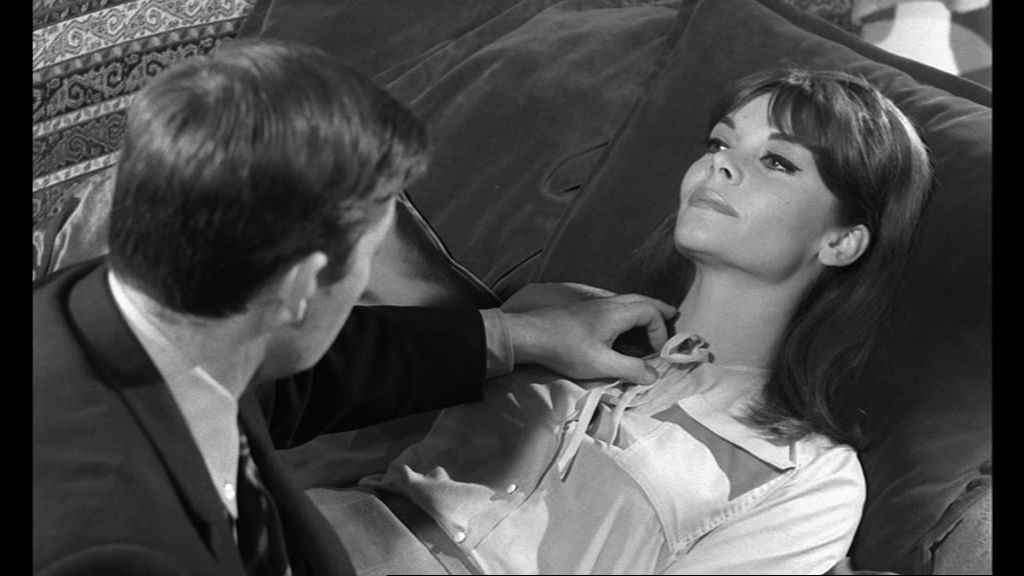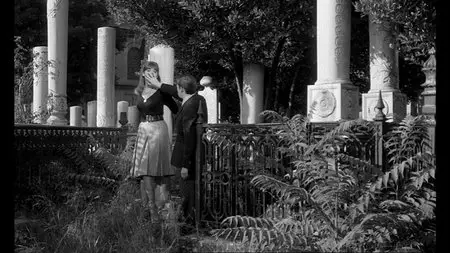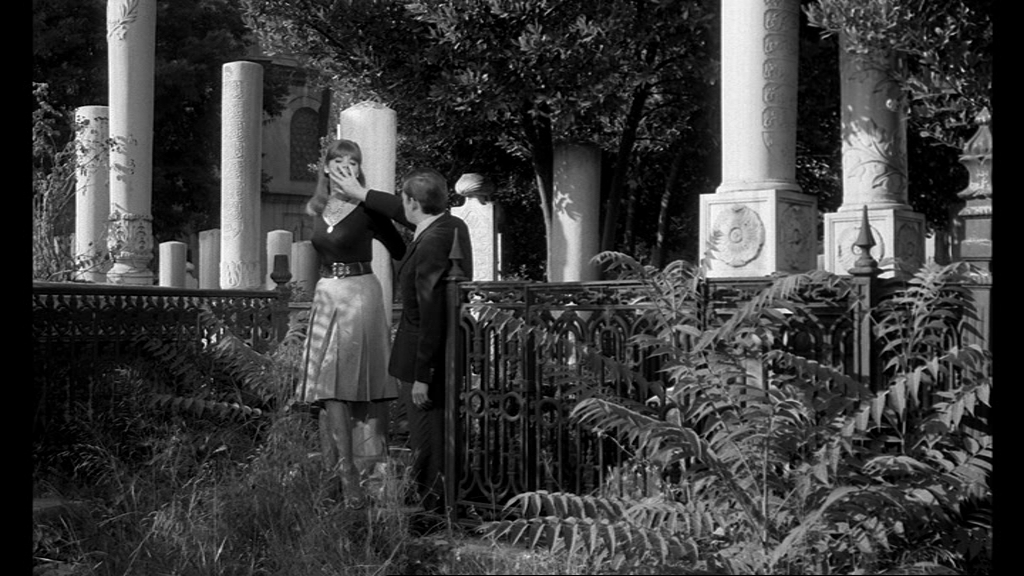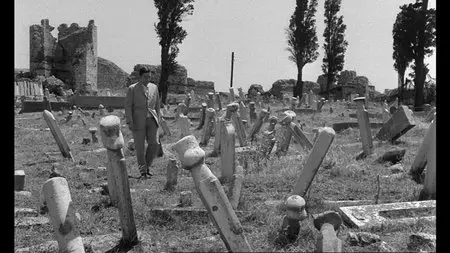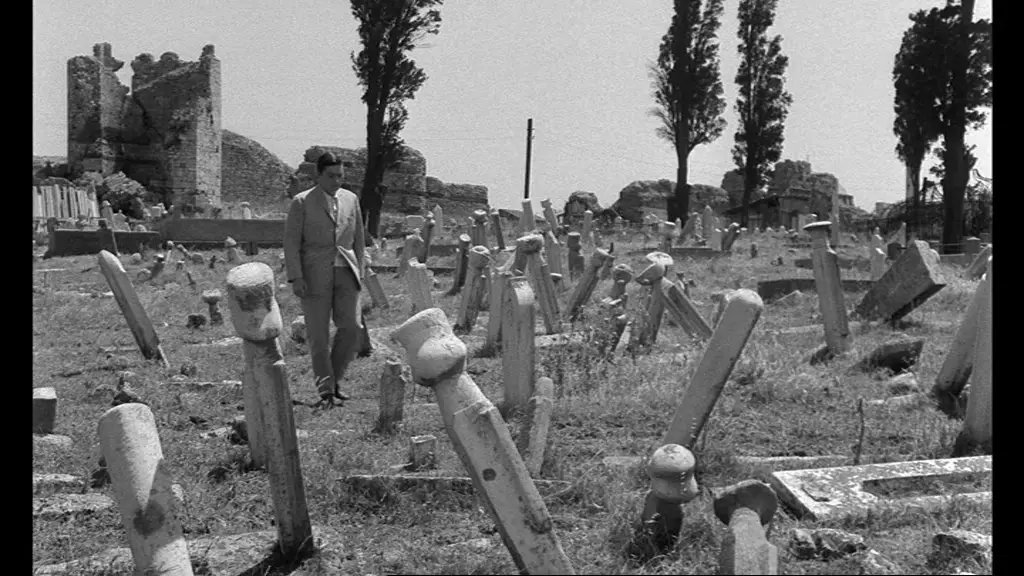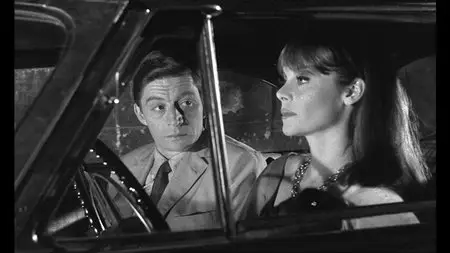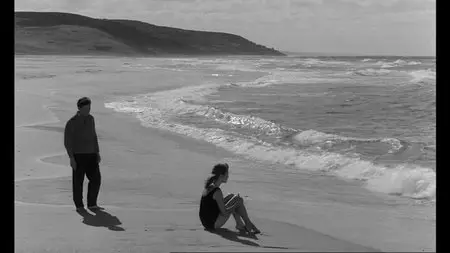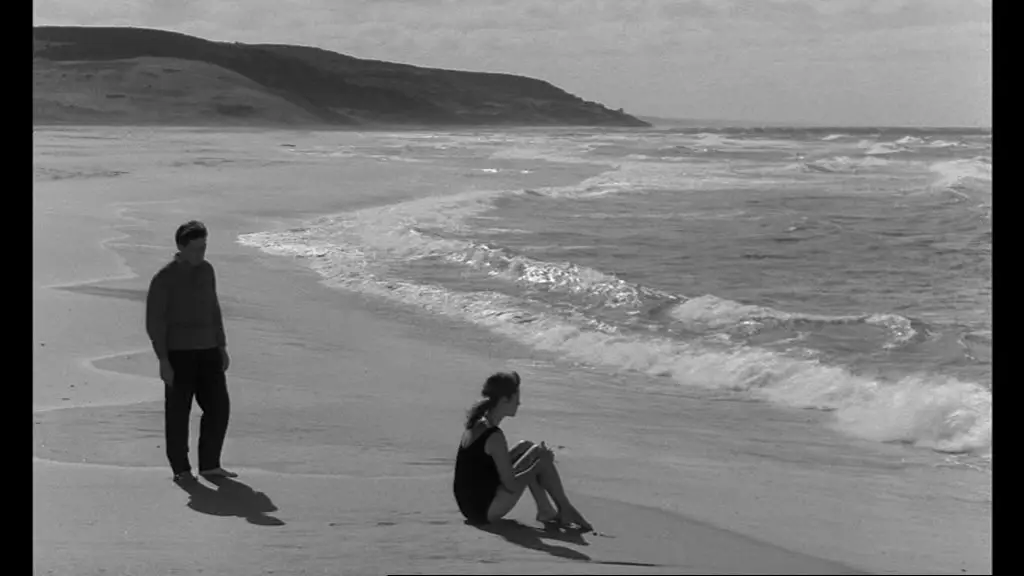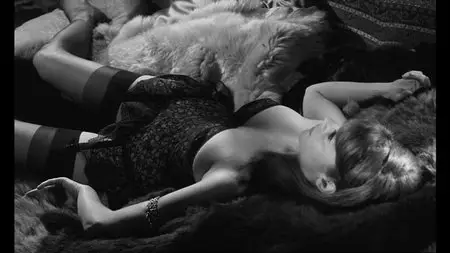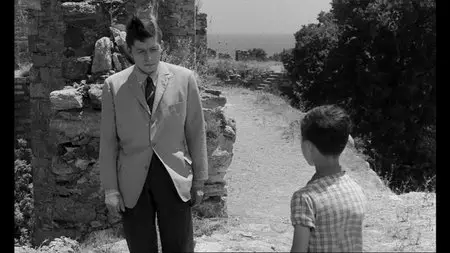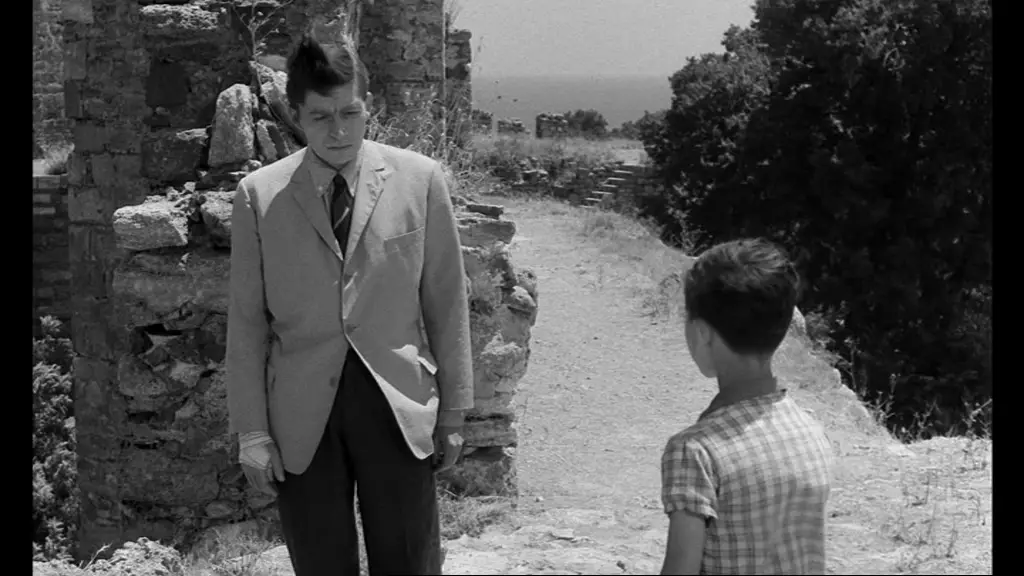L'immortelle (1963)
DVD5 Custom | VIDEO_TS | PAL 16:9 | 01:37:10 | 3,79 Gb
Audio: #1 Français and #2 Italiano - both AC3 2.0 @ 192 Kbps
Substitles: English (added), Italiano
Genre: Art-house, Drama
DVD5 Custom | VIDEO_TS | PAL 16:9 | 01:37:10 | 3,79 Gb
Audio: #1 Français and #2 Italiano - both AC3 2.0 @ 192 Kbps
Substitles: English (added), Italiano
Genre: Art-house, Drama
Director: Alain Robbe-Grillet
Writer: Alain Robbe-Grillet
Stars: Françoise Brion, Jacques Doniol-Valcroze, Guido Celano
With its highly stylized camerawork and fragmented narrative structure, Alain Robbe-Grillet s is a cinematic arabesque that teases the eye with visual delights yet sadistically confounds the viewer s expectations. Not dissimilar to Alan Resnais s Last Year at Marienbad, which he had written two years earlier, L IMMORTELLE involves a Frenchman (Jacques Doniol-Valcroze), traveling in Istanbul, fascinated by the city s language, architecture, and exotic culture. He soon becomes entranced by a mysterious woman (Françoise Brion), who seems to encourage his attentions but remains, maddeningly, just beyond his reach. His erotic pursuit of the woman leads him into the criminal underworld…with deadly consequences!
N travels to Istanbul to take up a teaching job; taking a month off to get himself familiarised with the country he gets lost and asks L to help him. He falls in love with her and becomes obsessed with her mysterious connection to M, a sunglass-wearing stylish man accompanied everywhere by Dobermans. L disappears and N begins a frantic search for her. He finds her only to tragically lose her once more. It's possible that N's name is André; it's less certain whether L's real name is Lucille or Lane. If this weren't confusing enough, there is a plot about white slavery in Istanbul. Or maybe not.
This is the spectacular debut of Alain Robbe-Grillet, the screenwriter of Alain Resnais' mind trip Last Year In Marienbad. Once again he subverts the conventions of narrative by fracturing timelines, contradicting the facts of the action from chapter to chapter, interrupting the flow of the narrative with repetitive descriptions of objects and ending the novels on a note of ambiguity.
L'Immortelle is all about deception and artificiality. L gives N a guided tour across Istanbul, promising him to show him its cultural treasures only to bring attention to their own falsehood. Istanbul is a city putting on an act for the tourists, she explains, mythical Istanbul only exists as an illusion to meet the Westerners' stereotypes. As L demystifies Istanbul, her own mysteries deepen. Why does she pretend not to understand Turkish? Who is the sun-glassed man N sees her with on several occasions? Is he a pimp or the leader of a white slavery ring? And why does she disappear? This movie takes a sadistic pleasure in teasing the viewer and denying him a clear answer. It brings up questions of identity and memory but confuses the answers through multiple interpretations, and in the end says there aren't any answers at all. The viewer who enjoys these perverse entertainments must be the rare person who loves frustration in his art.
If the plot is deliberately sparse, the technical construction of the movie is exuberant. Released in the same year two revolutionary movies – Otto e Mezzo and Contempt –changed the art of cinema, L'Immortelle followed a different path to filmmaking while retaining its own originality.
Constructed in order to resemble the imperfection and fleetingness of memory, the movie builds itself upon successive layers of flashbacks, obsessively repeated with disorienting variations. A gesture of the hand performed in middle of a forest is re-enacted in a hotel room, a scene is re-imagined with different characters.
The scenes cut abruptly into each other proudly piling up what is commonly called continuity errors. A character wearing a white suit stands disoriented in the middle of a street; as the scene cuts to him climbing a street he wears a black suit. N and L leave a mansion on the margin of the Bosphorus by a row-boat, only for the scene to shift to the two watching from a ferry the same boat coming into the river. Try to make sense of this, dear viewer.
If this visual confusion weren't enough, the sound, designed by Michel Fano, further serves to disrupt the intelligibility of the action. A howling at the beginning of the movie is heard again in a tragic scene later on. Often disconnected from the image, sounds and noises follow their own logic and reoccur like musical themes.
Little information is given about the characters. During a stroll in the woods, N asks L for her home address. He doesn't even know where she lives. She asks him something to write on and he hands her a blank page and a pen. She writes something on it but throws the paper away, telling him not to bother to look for it because what she wrote is false. After she disappears halfway into the film, N searches for the blank paper but when he finds it, it's blank. She never wrote anything on it. Always the movie points to the unreality and falsity of everything.
The movie doesn't flow as a linear narrative but moves as a circle; it builds on the cumulative effect of repetition. After visiting all of Istanbul together, an obsessed N in search of L starts retracing all his steps, discovering by himself the secrets of the city. Even limited by the barrier of language, N scratches a conspiracy that may involve street peddlers of tourist souvenirs, shop-keepers, and the cops, all involved in a mystery that may have something to do with kidnapped women. Is the mystery really worth knowing? Probably not, I doubt Robbe-Grillet really thought it through. But the viewer should understand this is not a movie to watch to know what happens, but how it happens.
The movie is not character-driven and the actors don't perform. They gesture. They move their heads in slow form, smile, stare, or they stay fixed. One of the most unsettling traits of the movie is the fact that time seems suspended around L and N. As they walk the streets, the figures of the passersby remain frozen like statues, as if in anticipation of something. This was an idea Robbe-Grillet took from 'Marienbad,' but here it's much more involving since it affects an entire city.
Although there is no acting here in the traditional sense, that is not to say the actors weren't perfectly chosen. Jacques Doniol-Valcroze, with his wide eyes and impersonality, is the stand-in for the viewer, the anchor that keeps the viewer focused. Through him we watch and try to understand. Like him we're totally clueless. The sensual Françoise Brion is a cipher without substance, hiding herself behind her seductive smile and her dream-like voice with its perfect tone for the narrative of a story that seems the cross between a fairy-tale and surrealist experiment.
Robbe-Grillet enchants, surprises and torments with the dazzling procession of sounds, sights and expectations that constitute this cinematic labyrinth.IMDB Reviewer
Special Features: None
All Credits goes to Original uploader.
––––––––––––––––––––––––––––––––––––––-


